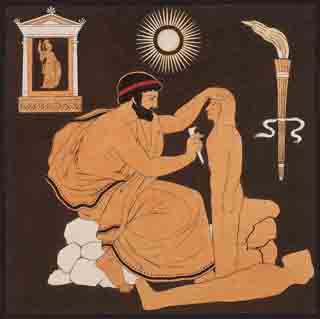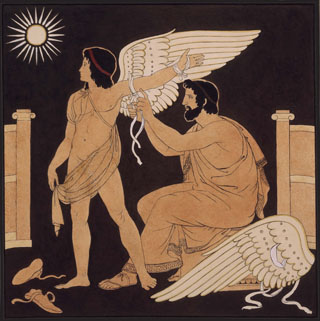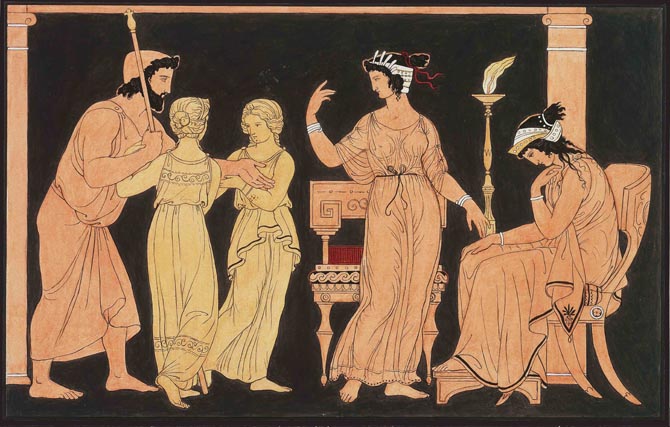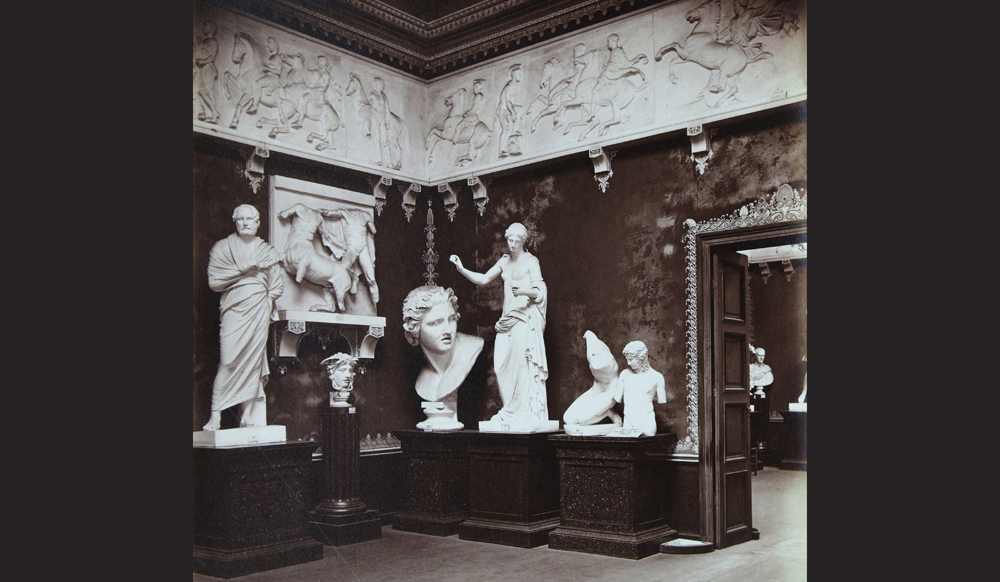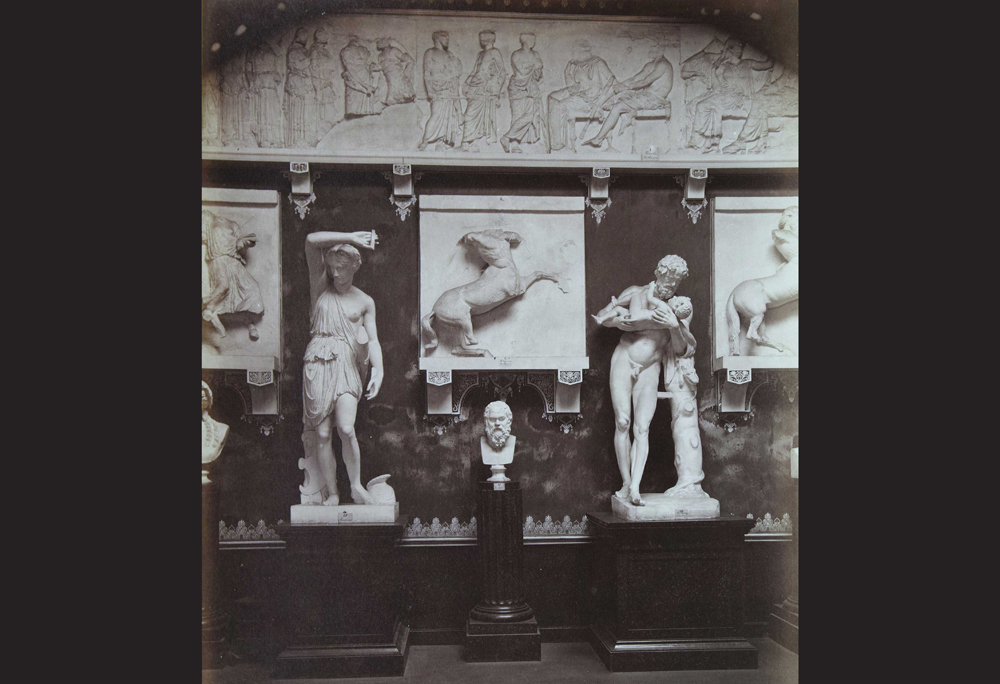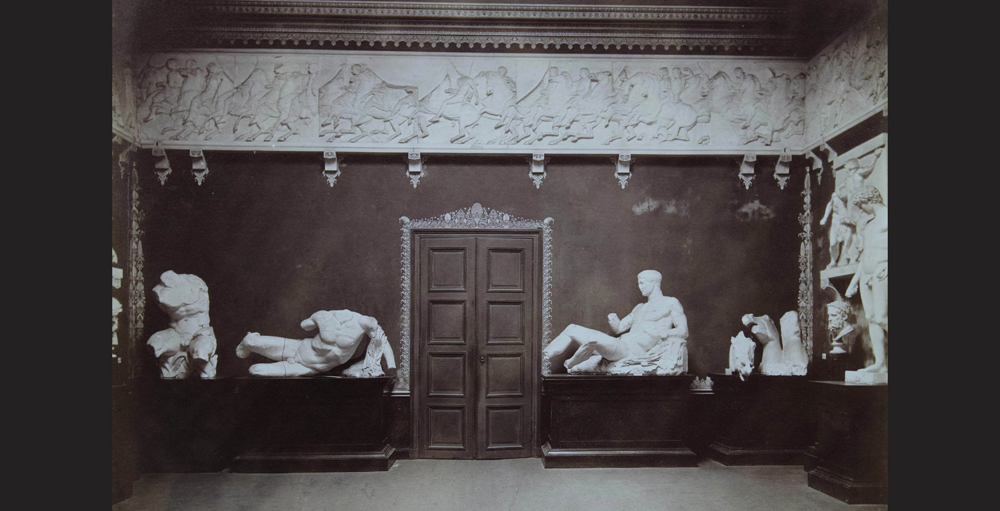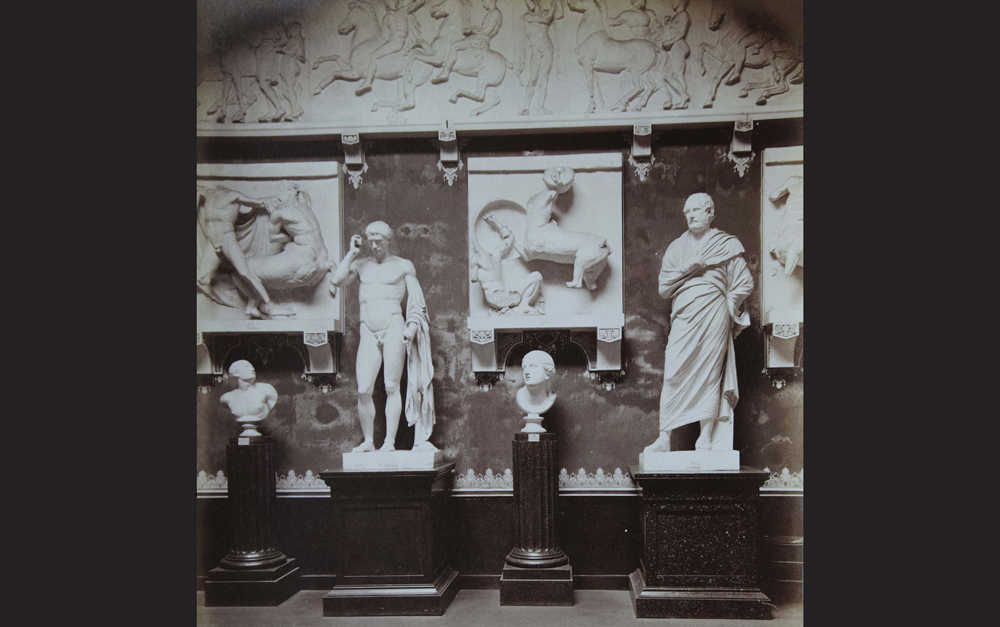First skylight room with antiquities
Greek classics
in plaster
After 1817, the Städelsches Kunstinstitut had started to systematically order plaster casts of antique sculptures in Paris and London. The necessity of falling back on reproductions in order to assemble an antique collection was also common elsewhere, for example at royal drawing academies. Drawing antique sculptures – in the form of plaster casts from an institute’s permanent collection – was a fundamental part of a young artist’s training.
The first skylight room was dominated by the panels of the frieze of the Parthenon in Athens, divided over all four walls. They had become part of the Art Institute’s collection by 1819 at the latest, thus forming the earliest casts of the “Elgin Marbles” in Germany. On the entrance’s side, they were joined by two lying figures and horse heads from the temple’s gables. The “Belvedere Torso”, the “Discobolus” and the “Mattei Amazon” on the right, as well as the “Venus de Milo” in front of the end wall, were dated to the fifth and fourth century BCE as well. The latter work was part of a symmetrical ensemble consisting of two genre figures (the “Young Girl Playing Knucklebones” and the “Spinario”), two Aphrodites, and two Eros figures.
The symmetry, but also the customary presentation of full-length figures in alternation with busts, competed with a third principle of museum presentations: a chronological arrangement would have clearified stylistic developments, particularly in the case of Greek sculpture. Its absence was excused by the “dimensions of the location”, that is, the spatial conditions at the Neue Mainzer Strasse (Vorläufige Mittheilungen 1833, p. 7).
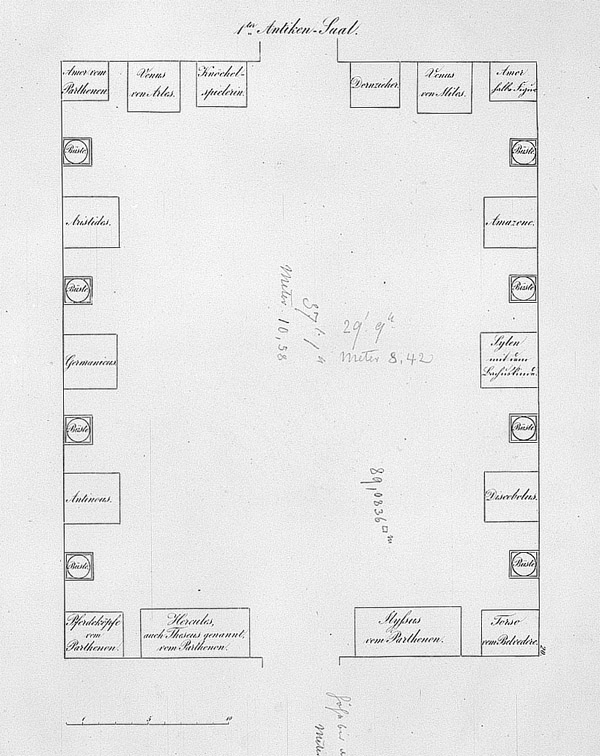
Historical
Photos
Of the skylight rooms with antiquities we can show historical photos from 1875. The presentation followed the concept already developed in 1833 and had only partially been changed and supplemented at later points.
At the time of the Institute’s opening on 15 March 1833, everything had not yet been realised as planned. For example, the plan of the room that was published in 1833 already indicated the placement of smaller socles with busts between the larger figures. The delivery of the casts of mainly Roman imperial busts had been delayed, however. The preserved photographs therefore reflect the ideal state, which the visitor of 1833 could not yet enjoy.
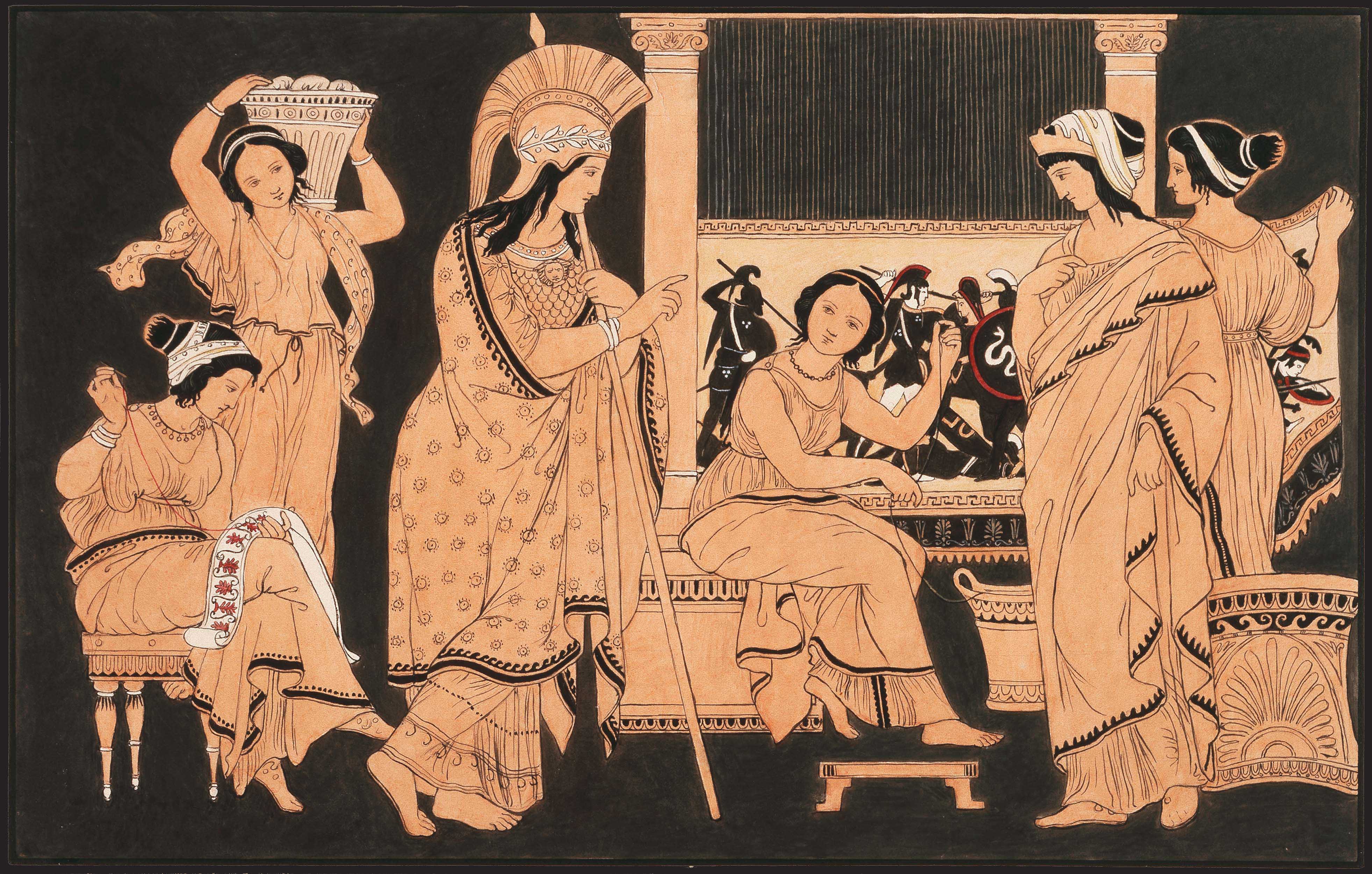
Decoration
“based on Greek vase paintings”
The ideal of a chronological presentation, which had initially been upheld, was reflected in the decoration of the walls. In the first room, forms were used that were “more strict, suitable for an earlier period” (Vorläufige Mittheilungen 1833, p. 8). Philipp Veit had designed four images “based on Greek vase paintings”.
Veit had based the themes on relevant Greek myths in order to “visualise the art-forming and inventive power of Man”. Depicted above the entrance was “Prometheus Creating Mankind”, “signifying the beginning of Art” as a critic put it (Kunst-Blatt 1834, p. 74). Opposite this image, the first “artist”, Daedalus, put on the wings on his son Icarus – the “Kunst-Blatt” critic interpreted this scene as a “wistful look at the history of art, teaching how a too-presumptious ascent will be punished”. Over the longitudinal walls, “male” and “female” artistic creation were presented opposite each other: one image showed how Thetis asked the blacksmith god Hephaestus to create weapens for Achilles (an “artistic high point”, the critic of the “Kunst-Blatt” judged), the other image showed Pallas Athena’s visit to the weaving Penelope (which marked “the introduction and spread of visual art in life and commercial craft”).
